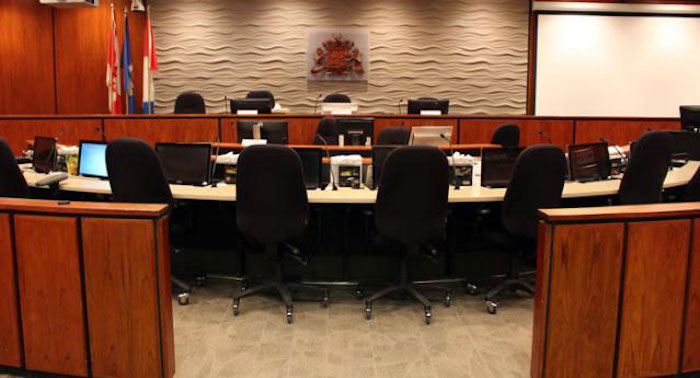Alberta
Update 11: Northwest Alberta wildfires (June 1 at 6:30 p.m.)

June 01, 2019
Additional 12,000 residents placed on evacuation alert.
These residents are encouraged to gather medications, identification and belongings, and make plans for pets and livestock in case an evacuation order is issued.
Current situation
New evacuation alert in place for:
- Approximately 12,000 residents in Mackenzie County, north of Peace River to Township Road 110, west of Range Road 120, and east of Highway 35 south of High Level; and south of Peace River to Township Road 1040, west of Range Road 120 and east of Steep Hill Creek should be prepared to evacuate on short notice.
The following communities remain on eight-hour evacuation alert:
- Town of Slave Lake
- MD of Lesser Slave Lake, including Old Smith Highway, Mitsue, Poplar Lane, Fawcett Lake, Eben Road and Bayer Road
- Peerless Lake area of Peerless Trout First Nation
Mandatory evacuations remain in place for:
- Town of High Level and Mackenzie County areas south/southeast of town
- Dene Tha’ First Nation communities of Bushe River, Meander River and Chateh
- Paddle Prairie Metis Settlement
- Keg River, Carcajou, and all residents from the northern border of the County of Northern Lights to Township Road 922 (Notikewin Road)
- Bigstone Cree Nation
- Wabasca No. 166
- Parts of the MD of Opportunity No. 17
- Hamlet of Wabasca – Desmarais
- Hamlet of Sandy Lake
- Chipewyan Lake Village
- Bigstone Cree Nation
- Steen River
- The Trout Lake area of Peerless Trout First Nation
- MD of Lesser Slave River
- Hamlet of Marten Beach
- Hamlet of Marten Beach
- Chuckegg Creek wildfire, southwest of High Level, is about 280,000 hectares.
- Jackpot Creek wildfire, approximately 11 km north of Lutose, is about 24,700 hectares.
- McMillan Wildfire Complex, southwest of Bigstone Cree Nation, is more than 212,386 hectares.
- Battle Wildfire Complex in Peace River is about 53,900 hectares.
- Provincial resources on the ground include more than 2,300 wildland and structural firefighters and staff, approximately 228 helicopters and 28 air tankers and heavy equipment.
- Residents should check Alberta Emergency Alerts for more detailed and frequently updated information.
- Approximately 11,000 people have been evacuated.
- AHS has evacuated 19 patients from the Manning Community Health Centre as a precaution due to smoke concerns and approximately 37 patients from a hospital in Fort Vermillion.
- People driving in fire-affected areas should carry enough fuel, as it may not be readily available.
Visit emergency.alberta.ca for detailed and frequently updated information.
Air quality
- Smoke is causing poor air quality and reducing visibility.
- Much of northern Alberta is under a special air quality statement.
- Individuals may experience symptoms, such as increased coughing, throat irritation, headaches or shortness of breath. Children, seniors and those with cardiovascular or lung disease, such as asthma, are especially at risk.
- If you experience breathing difficulties, find an indoor place that’s cool and ventilated.
- Alberta Wildfire recommends checking FireSmoke.ca to find out where the smoke is coming from.
Financial supports
- Evacuees should check alberta.ca/emergency for updates on evacuation payment eligibility.
- Evacuees in need of financial assistance for immediate needs can apply for an Income Support program emergency needs allowance. This benefit may cover your accommodation, clothing and other urgent needs. Please call 1-877-644-9992 for more information.
- You may qualify for the evacuation payment if you were:
- living, working or vacationing in the affected area
- forced to leave due to an evacuation order
- forced to leave your residence (primary, working or vacationing) due to a mandatory evacuation order – current communities include:
- High Level
- Paddle Prairie
- Bushe River
- Chateh
- Meander River
- paid for most of your costs to evacuate
- Albertans who qualify will receive $1,250 and $500 for each dependent child under 18 living in the same home when the evacuation order was given.
- Applications methods:
- Apply online through the MyAlberta Evacuation Payment application using a smart phone, device or desktop. Interac e-transfers may take 24 hours to process.
- Apply in–person at any Alberta Supports Centre.
- Before going to an Alberta Supports Centre, please check the status of the area to ensure it is safe.
- If you are visiting an Alberta Support Centre, please bring:
- Photo identification
- Proof of residence or presence in the community
- Identification for partner/spouse and/or dependents children if claiming for them
- If you have questions contact Alberta Supports: 1-877-644-9992.
- More than 6,600 individuals have received evacuee support, and more than $6.8 million has been distributed.
Reception and call centres
- Reception centres are open at:
- Slave Lake Legacy Centre (400 6 Avenue NE)
- High Prairie Gordon Buchanan Centre (5413 49 Street)
- Grande Prairie Regional College (10726 106 Avenue)
- Peace River Misery Mountain Ski Hill (10408 89 Street)
- La Crete Heritage Centre (25411 Township Road 1060, south of La Crete)
- Fort Vermilion Community Cultural Complex (5001 44 Avenue)
- Dene Wellness Centre (In K’atl’ Odeeche First Nation, 17 kilometres east of Hay River)
- Calling Lake Recreation Centre (2870 Central Drive)
- Back Lakes Arena (249 Red Earth)
- Evacuation reception centre hours can be found at emergency.alberta.ca.
- Government’s call centre at 310-4455 will be open from 8 a.m. to 8 p.m. Saturday and Sunday.
Highway updates
- To stay informed on all road closures due to the wildfires, visit 511.Alberta.ca or download the mobile app.
- Highway 35 from High Level to the Northwest Territories border is open at this time. Emergency management officials are monitoring highway and wildfire conditions closely. Authorities may close the highway without warning if conditions change.
- The following highways are closed:
- Highway 35, south of High Level to Township Road 922 near Manning.
- Highway 692 near Hawk Hills.
- Highway 695, East and West, including Keg River.
- Highway 697, from Highway 35 to Range Road 185, west of La Crete.
- Highway 58, from High Level to approximately 90 km west of High Level.
- Highway 754 from Highway 88 to Wabasca.
- The La Crete Ferry is closed.
Insurance information
- Evacuees should retain all of their receipts for food, accommodation and other related expenses to provide to their insurer.
- Most home and tenant insurance policies provide coverage for living expenses during an evacuation.
- Albertans can contact the Insurance Bureau of Canada at 1-844-227-5422 or by email at [email protected]. Information about insurance coverage is available online at ibc.ca/ab/disaster/alberta-wildfire.
Justice and legal matters
- All High Level, Fort Vermillion and Chateh court matters will be heard in Peace River. Call the Peace River court at 780-624-6256 for inquiries on matters scheduled for this week and next. Matters will be held by phone, if necessary, but you must register to do so.
- In many cases, tickets can be paid online. For any other inquiries requiring direction from the court about Peace River and High Level court matters, call the Peace River court at 780-624-6256.
- If you have an appointment with a probation officer in an evacuated area, report to the community corrections office nearest you. Please call 780-427-3109 (to call toll free, first dial 310-0000) for information.
- If you are an intermittent server in an evacuated area, call the Peace River Correctional Centre at 780-624-5480 (to call toll-free, first dial 310-0000).
Education
- School officials in fire-impacted areas will address the impacts of disruption on the academic program and school year. Students or their guardians should watch for online or direct communications from local school authorities about specific changes.
Provincial park closures
- Lesser Slave Lake Provincial Park, Twin Lakes Provincial Recreation Area, Moose Lake Provincial Park and Notikewin Provincial Park are closed.
- Calling Lake Provincial Park campground is closed to accommodate evacuees from the M.D. of Opportunity. Any campground reservations will be refunded. The boat launch is available for public day use, including for anglers participating in the fishing season starting June 1.
Boil water advisory
- Boil water advisories remain in place for Meander River (Dene Tha’ First Nation) and North Tall Cree (Little Red River Cree Nation). Although power has been restored, the boil water advisories will remain in place until water testing is complete.
Health
- Mental health support is available by calling Alberta’s 24-hour help line at 1-877-303-2642.
- Alberta Health Services is providing support to the reception centres. These supports include addiction and mental health, Indigenous health liaisons, nursing, emergency medical services, public health and home care.
Pets and livestock
- High Level animal control has collected household pets that have been left behind. For questions regarding your pets, please call 780-926-2201.
- For evacuees in the Wabasca area, please fill out an online form on the Alberta Animal Disaster Response Facebook group, or text 403-869-4964 and provide your name, contact number, number of animals missing, where they were last seen, and a brief description of your pet.
- The County of Northern lights will allow residents to enter property to look after livestock between 7 a.m. and 10 p.m. Residents must first go to the County Office to register for the temporary access pass.
Electricity and Natural Gas Billing
- High Level and area residential, farm, irrigation and small commercial electricity and natural gas customers affected by the evacuation will not be billed for the period covered by the order.
Donations and volunteers
- High Level is not accepting donations or volunteers at this time.
- The Town of Slave Lake has set up an online form for offers.
- Check the Mackenzie County Facebook page for an up-to-date list of donations needed and drop-off locations.
Canada Post
Mail service has been suspended in:
- High Level, Meander River, Chateh, Paddle Prairie, Keg River
- High Level evacuees can pick up mail from the Slave Lake Post Office
- Chateh evacuees can pick up mail at the Fort Vermilion Post Office
- Meander River evacuees can pick up mail at the La Crete Post Office
Mail service has been restored in:
- Fort Vermilion, La Crete, Rainbow Lake, Zama City
If you require urgent access to critical items, such as medications and passports, please call 1-800-267-1177. You may be able to arrange for pick up at the Slave Lake Post Office (100 2 Street NE).
Mail will be held at the Edmonton depot until mail service resumes.
- Check the Canada Post website for updates.
Income Support, Alberta Supports and AISH
- Evacuees receiving the Assured Income for the Severely Handicapped or the Income Support program by cheque rather than electronic deposit can pick up their cheque at their nearest Alberta Supports Centres.
- If you are in La Crete, you can pick up your cheque at the local reception centre. If you receive your benefits via direct deposit, your payment will be deposited as usual.
- For information on child intervention and child care, call 1-800-638-0715.
- Persons with developmental disabilities, their families or contracted service providers can call the nearest Alberta Supports Centre for assistance.
- For additional information on social benefits, or to find a list of Alberta Supports Centres, call 1-877-644-9992 province-wide between 7:30 a.m. and 8 p.m., Monday to Friday.
- Employment insurance: evacuees can visit Service Canada online to apply at www.canada.ca/en/services/benefits/ei.html. Use code 4812014812201900.
Health card, driver’s licences, ID cards, birth certificate
- To get a replacement Health Care Insurance Card call 780-427-1432 or toll free at 310-0000 and then 780-427-1432 when prompted. Your Alberta Personal Health Card can be mailed to a temporary address.
- If driver’s licences, identification cards, and/or birth certificates were left behind during the evacuation, replacement cards and certificates can be ordered free of charge at a registry agent.
Public information
- You can call 310-4455 for more information.
Related information
Alberta
Alberta taxpayers should know how much their municipal governments spend

From the Fraser Institute
By Tegan Hill and Austin Thompson
Next week, voters across Alberta will go to the polls to elect their local governments. Of course, while the issues vary depending on the city, town or district, all municipal governments spend taxpayer money.
And according to a recent study, Grande Prairie County and Red Deer County were among Alberta’s highest-spending municipalities (on a per-person basis) in 2023 (the latest year of comparable data). Kara Westerlund, president of the Rural Municipalities of Alberta, said that’s no surprise—arguing that it’s expensive to serve a small number of residents spread over large areas.
That challenge is real. In rural areas, fewer people share the cost of roads, parks and emergency services. But high spending isn’t inevitable. Some rural municipalities managed to spend far less, demonstrating that local choices about what services to provide, and how to deliver them, matter.
Consider the contrast in spending levels among rural counties. In 2023, Grande Prairie County and Red Deer County spent $5,413 and $4,619 per person, respectively. Foothills County, by comparison, spent just $2,570 per person. All three counties have relatively low population densities (fewer than seven residents per square kilometre) yet their per-person spending varies widely. (In case you’re wondering, Calgary spent $3,144 and Edmonton spent $3,241.)
Some of that variation reflects differences in the cost of similar services. For example, all three counties provide fire protection but in 2023 this service cost $56.95 per person in Grande Prairie County, $38.51 in Red Deer County and $10.32 in Foothills County. Other spending differences reflect not just how much is spent, but whether a service is offered at all. For instance, in 2023 Grande Prairie County recorded $46,283 in daycare spending, while Red Deer County and Foothills County had none.
Put simply, population density alone simply doesn’t explain why some municipalities spend more than others. Much depends on the choices municipal governments make and how efficiently they deliver services.
Westerlund also dismissed comparisons showing that some counties spend more per person than nearby towns and cities, calling them “apples to oranges.” It’s true that rural municipalities and cities differ—but that doesn’t make comparisons meaningless. After all, whether apples are a good deal depends on the price of other fruit, and a savvy shopper might switch to oranges if they offer better value. In the same way, comparing municipal spending—across all types of communities—helps Albertans judge whether they get good value for their tax dollars.
Every municipality offers a different mix of services and those choices come with different price tags. Consider three nearby municipalities: in 2023, Rockyview County spent $3,419 per person, Calgary spent $3,144 and Airdrie spent $2,187. These differences reflect real trade-offs in the scope, quality and cost of local services. Albertans should decide for themselves which mix of local services best suits their needs—but they can’t do that without clear data on what those services actually cost.
A big municipal tax bill isn’t an inevitable consequence of rural living. How much gets spent in each Alberta municipality depends greatly on the choices made by the mayors, reeves and councillors Albertans will elect next week. And for Albertans to determine whether or not they get good value for their local tax dollars, they must know how much their municipality is spending.
Alberta
Premier Smith addresses the most important issue facing Alberta teachers: Classroom Complexity
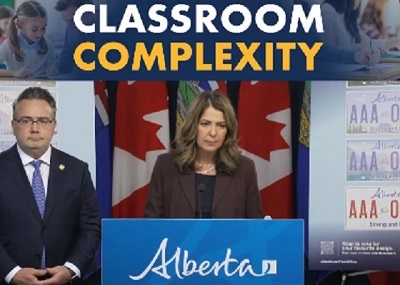
Premier Danielle Smith is posting this response to a media question about Classroom Complexity.
While Albertans are hearing a lot about capping class sizes, Premier Smith says it might be a much better idea to talk about capping “complexity”.
The challenges teachers face in today’s classrooms are recognized, and work continues toward practical solutions that address their concerns.
Achieving a fair and reasonable agreement that best supports students remains a top priority. pic.twitter.com/o4UCt7sDoU
— Danielle Smith (@ABDanielleSmith) October 16, 2025
-

 International2 days ago
International2 days agoNumber of young people identifying as ‘transgender’ declines sharply: report
-
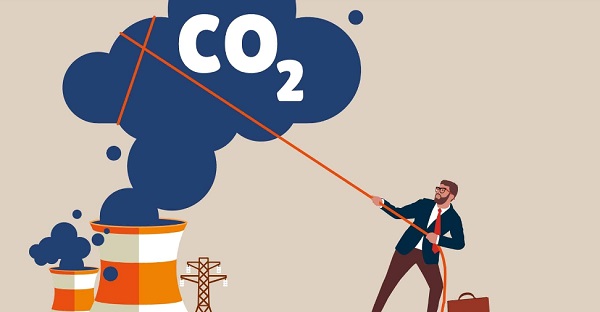
 Alberta2 days ago
Alberta2 days agoThe Technical Pitfalls and Political Perils of “Decarbonized” Oil
-

 National23 hours ago
National23 hours agoDemocracy Watch Renews Push for Independent Prosecutor in SNC-Lavalin Case
-

 Health2 days ago
Health2 days agoColorado gave over 500 people assisted suicide drugs solely for eating disorders in 2024
-
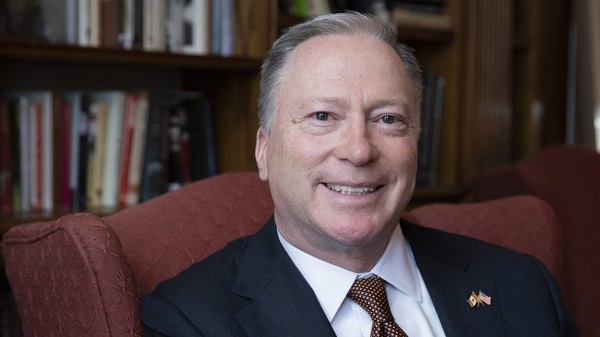
 Alberta2 days ago
Alberta2 days agoEnbridge CEO says ‘there’s a good reason’ for Alberta to champion new oil pipeline
-
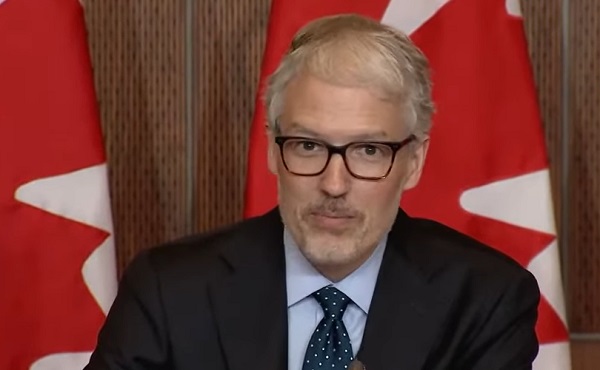
 Censorship Industrial Complex2 days ago
Censorship Industrial Complex2 days agoCanada’s privacy commissioner says he was not consulted on bill to ban dissidents from internet
-
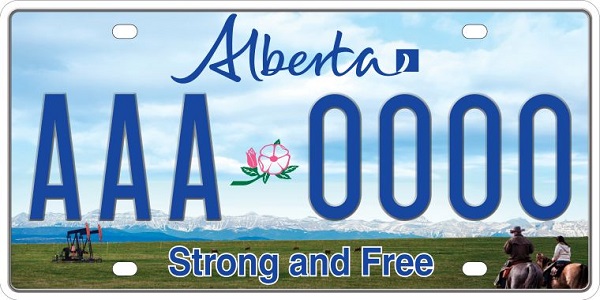
 Alberta21 hours ago
Alberta21 hours agoClick here to help choose Alberta’s new licence plate design
-

 Bruce Dowbiggin2 days ago
Bruce Dowbiggin2 days agoLong-Distance Field Goals Have Flipped The Field. Will The NFL Panic?






